#zelda lore
Text

"Born from a Nightmare,
Hylia refashion the Demon,
Into the Lord of the Mountain-
Guardian of the Hyrulean Wilds."
(This was for a zine titled 'Tales From Hyrule' featuring folklore surrounding ancient Hyrule that I did a long time ago! I forgot to upload it, so in favor of Tears of the Kingdom's release, here's some ethereal art!)
#nintendo#the legend of zelda#breath of the wild#botw#tloz#illustration#fan art#the goddess hylia#lord of the mountain#nightmare#zine piece#art#digital art#zelda#legend of zelda#my art#thankyourluckystars13#lore#zelda lore#game art#gaming
723 notes
·
View notes
Text
Zelda 2 comic sneak peek
I took out my old full-length Zelda 2 comic draft and chose a segment to make a short comic out of. It's missing context from the whole grand narrative of the entire story, but I think it gets the point across.
There were a couple potentials, and I ended up choosing the scene where Link discovers that his blood is the key to awakening Ganon. It's the most well-known plot point of the game in the LOZ fandom in general, besides the Prince of Hyrule plot.
Throughout the comic, Link gets attacked by various monsters during his quest. He thought Hyrule was incredibly dangerous for merchants and travelers, but found out that it was only him encountering monsters at a high rate, thus targeted (that is not discussed in this short comic). This disturbs him a lot. And this is the scene when he discovers why he's a target. It's more than the monsters seeking revenge.
At some point in the game, the player is made to travel towards south-western Hyrule and use the Hammer on dueling peaks to enter and get a magic potion. You specifically enter the peak that is originally Level 9 in Zelda 1. I found that to be very... interesting. And suspicious. Why did the developers think "Okay lets have Link go back to the traumatizing final boss place from the first game to retrieve an item :D" It's kinda epic honestly and it gave me the idea:
For the full comic, I made it that Link follows rumors and travels down there in the hopes of finding the magic book containing the revive spell, which is game-changing for the rest of his journey. Being the adventurer that he is, Link takes the risk and goes there thinking the place is long-abandoned and that Ganon probably no longer exists. Except, that isn't the case.
(Okay I must add, after the revelation, Link loses his adventurous spirit and gets very serious with his quest. No longer enjoys exploring, which is all this Link is about. He starts developing Big Fears. This eventually spawns Dark Link. I wish I could make the entire comic but I know I can't T-T I should probably finish up and polish the draft and post it online for whoever is interested in a deep dive, lore-intense Zelda 2 story reimagining.)
It's the first time I do a 10 page comic, so I'm going through a learning curve right now xD It's going to be experimental, but I hope you enjoy it still.
Here are some WIP shots. Still a while before it's completed.



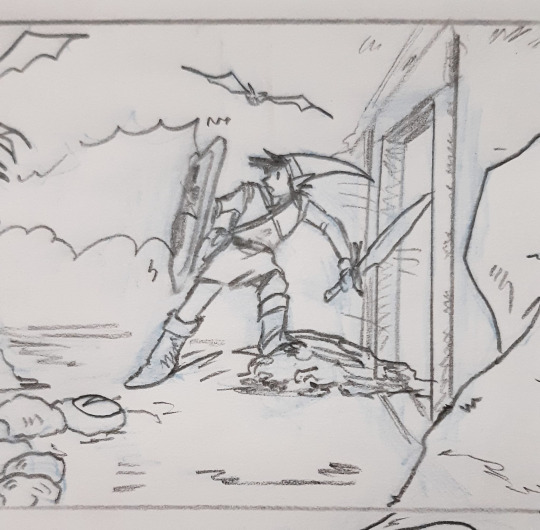
#Long post#text#legend of zelda#classic link#zelda 2#zelda ii#the adventure of link#zelda lore#I don't really like how the comic is looking or how it's paced buuutttt eh#Maybe after I scan and polish and add text it will look alright#I'm doing the whole thing on paper#but will definitely do major edits after scanning#Might be done in two or three weeks? give or take#Working on this in the evenings after work#Maybe I should practice my writing and write the whole comic instead of drawing it#with page illustrations >:3c I'm thinking.... I'm thinking...#I love zelda 2. a lot#8-bit games always give some much room for interpretation#especially when it has a fairy-tale like story#fairy-tales have this strange flexible quality of being as simple as you like or very complicated
181 notes
·
View notes
Text
The entire Zelda fanbase rn:

931 notes
·
View notes
Text
- - ┈┈∘┈˃̶༒˂̶┈∘┈┈ - -
I still don't share the opinion of people who consider Fi annoying. Like, yes, it pops up on the screen every five seconds, I get it.
But it's so logical from the point of view of the plot.
Of course, we, the players, understand how to solve this or that puzzle or defeat this or that monster, but here we miss a very important detail.
Link's character doesn't know anything we know.
This guy had just descended from sky to earth, left his small peaceful island, where the only "dangerous" place was a small cave, and found himself in a huge, unknown world.
Of course, Fi will always fly out with his tips and hints, because it's like teaching a baby to walk —you watch it’s every step and are afraid about whether it will fall.
If I were in Link's place, I wouldn't even give Fi the chance to return to the sword for at least five minutes.
- - ┈┈∘┈˃̶༒˂̶┈∘┈┈ - -
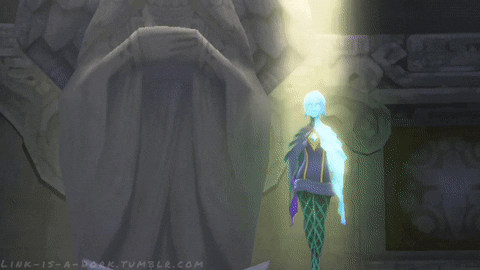
#legend of zelda#my little blue doodle#I love her so much#Fi my beloved#zelda theory#zelda lore#linked universe#botw#skyward sword
227 notes
·
View notes
Text


since peacocks don't really exist in the wild era, riju's feather patterns on her armour seemed purely cosmetic until totk, where it resembles the leaves of trees in the depths. along with the gerudo underground cemetery, it's another leftover of her people's past involvement there, passed down from each chief.
#totk#totk theory#zelda theory#totk lore#riju#totk riju#zelda lore#loz#tloz totk#gerudo#the depths#totk depths
160 notes
·
View notes
Text
I will now yell about Fi and Ghirahim as symbols of their respective creators, please stand by:

So, the biggest slap addition the lore that Skyward Sword gave us was (Her Grace) Hylia and (the Bringer of) Demise. Entities who, regardless of confusing localisation choices, exist as two sides of the same coin and are locked into a mutual karmic cycle.
They reflect each other like a mirror, and also represent an antithesis of each other, seemingly existing as consequence to one other. They were presented as the penultimate deities of the physical and metaphysical realms of their world since the advent of its creation by the departed Golden Goddesses; twinned yet opposite, and each both inevitable and necessary.
Shadow; Light. Chaos; Order. Indulgence; Restraint. Upheaval; Stability. Primordial; Designed. Spite; Grace. Hidden; Seen.
Ghirahim; Fi.
It goes right down to the blades that Demise and Hylia would level at one another. The spirits of each are a representative of the principles and philosophy championed by their creators.
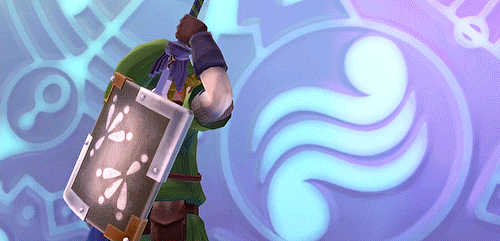
Now, the closer you get to the works and relics of the Gods/Gods Tribe in Zelda, the more you see divine constructs that blur the line of spiritual magic and advanced technology, and are ostensibly both. This was a direction that really bloomed in Skyward Sword, taking a running start on it that games hereafter have followed. The caveat is that only certain special people chosen by Gods or otherwise given permission to use this kind of Magitech can interact with it or produce things like it (either at all, or without punishment).
Even the Sheikah, who have closely served the intentions of the Gods/Spirits of Light (Hylia and her aligned) all throughout history, make the mistake of getting too comfortable in their inspiration and cross the line into imitations. Despite the successful utilisation of, and later recovery of, certain Sheikah Tech such as the Divine Beasts to positive effect, the tragedy of both the Sheikah's Divide and the Calamity's hijacking of Hyrulean defence systems is still played as a cautionary tale of hubris and knowing one's place in the natural order of things.
The Sheikah were effectively making unauthorised knockoffs of Divine Magitech and it bit them on the arse.
Can't have shit in Hyrule.
Pretty much every significantly advanced tribe in Zelda has a stated closeness to 'the Gods'. Either by being adjacent to or descended from deities and spirits collectively known as the Gods (specifically the Gods Tribe in JP), they are still distinctly subordinate to and separated from entities such as Hylia and the three Golden Goddesses.
Confirmed to be included in this special grouping are the Zonai and the Oocca, for instance. Speculatively, the Wind Tribe are an example of people who ascended (with permission or worthiness) from the surface-- they are an arguably Gerudo adjacent tribe who may even be precursors to the Zonai or related to the Twili.
The Picori, at the very least those in their native realm, also certainly count as part of this grouping. Though it could be argued whether those descent Minish living on the surface still do.
The Sheikah, it should be noted, have never gained entry to this Gods club. Despite their proximity in worship and service to Hylia, historically, they've also done some pretty shady things-- like the Shadow Temple and the general murder and espionage stuff -- that may have otherwise excluded them from ascending like the Wind Tribe did. They walk a grey line, and they have a duty in the eyes of the Powers That Be that apparently prefer they stay put.
Not Turtle-y enough for the Turtle Club.
Another example of this Icarus flying too close to the Sun type cautionary tale, and a far more egregious offender in the eyes of the Gods Tribe, are the 'Interlopers' who would eventually become the Twili. They were a tribe of people that, while squabbling with others, tried to take dominion of Hyrule (referred to itself as the Sacred Realm/Holy Land in TP) with powerful magic that more or less gave them a winning advantage. Specifically, the Crystal Stone of Shadow (the Fused Shadow) which greatly amplified their magical power.
Banished by the Spirits of the Light whole cloth into an underworld (lit. A Realm of the Dead) that we also know as the Twilight Realm, they have been shunned from the land they tried to conquer and transformed by shadow so much, they're now allergic to the light (without sufficient mystical power to bolster themselves).

Basically, the intended message is this: any earthly people who have advanced themselves without approval by the Gods Tribe-- especially by using Divine Constructs as inspiration or means-- have therefore disrupted the order of things, and stacked the deck too much in their own favour. Even if the intent was primarily a fixation on preserving Hylia's bloodline, and by extension her sacred land, it is still possible to elevate oneself above your contemporaries (especially the capacities of the Royal Family line in Hyrule) in such a way that you impose too much independent influence upon the the natural world.
No longer following 'the way of the Gods' (the Gods Tribe law) or respecting the order of things (ala Shintoist inspiration), you are labelled a disruption to harmony and peace, and therefore seen as corrupted and pollutive, and generally negative in your impact. You will then be chased off, at the very least, unless you renege-- for fear that you will bring in demonic influences or be used by them. This has canonically happened to both the Gerudo and the Sheikah, now.
But you know who Magic Constructs on par with the Gods Tribe, except it's more eldritch and organic-looking and primordial in form? It's the other club, the one that the disenfranchised Sheikah went and banged on the door of, hoping to be let in if they started wearing cool red and black outfits and changed their name and stopped worshipping Hylia.
Yeah. It's the Demon Tribe-- who are pretty much just the inverse reflection of the Gods Tribe and its set up. Their Magitech equivalents, and what they can do, only serve to further cement this.
Specifically, if you could suggest that the Gods Tribe's main objective is maintaining a status quo of shared prosperity that provides an ordered and peaceful existence through conformity and tradition, the Demon tribe is an ever churning well of opportunity where winner takes all. It is a hierarchy built on brutal meritocracy, honed by constant challenges and hard won continuation-- survival and status fought for and maintained by individualistic influence and innovation.
Many various little bastards exist in the Demon Tribe. Bosses in charge of sub-tribes of monsters are commonly seen, but they have their minor Deities ad Spirits, too. The head honchos are called Demon Kings (plural, because it doesn't describe a single position, but rather just very powerful Demons who have clout). Demise is both a Demon King, namely the most powerful one, and also the 'Chief' of the Demon Tribe; just as, in this case, Hylia could be considered the 'Chief' of the Gods Tribe. So, Demon God-King, really.
While Demise is incapacitated by Hylia's seal, his role as the Chief of the Demon Tribe is actually the position that Ghirahim fills in for as his (literal) right hand man-- the very extension of his arm, as his blade.
Both the Master Sword (Fi) and Ghirahim himself are, perhaps, some of the most advanced forms of this sort of Magitech we've actually ever seen.

Ghirahim goes above and beyond in his role, even going so far as to cultivate his full persona as a Demon in his own right in order to maintain his authority as the effective Regent while the big boy is incapacitated. He disguises his true form and nature, and with a surprising level of autonomy and self-transformation for what he is, sets about attending his duties with great devotion.
He seems to have an incredibly intuitive and flexible mode of operation. His sentience is full of creativity, emotionality, and genuine potential that he has the capacity to explore and shape with great freedom, for the construct that he is.
He is flamboyant and attention grabbing, highly expressive. He entertains great personal indulgence, even going so far as to toy with Link in a manner that borders on vicious training for a while. Though in part due to his undeniable sadism, Ghirahim almost can't help himself but to continue to test and push against the potential as a swordsman that the Hero has, inadvertently cultivating its growth.
This depth of identity and adaption he's capable of was either an intentional part of his design, or specifically not prevented by it-- both of which stand to represent something of Demise and Demonkind. The lengths to which Ghirahim is allowed to wield himself when not in his creator's hand is remarkable and, though he is shown to be unable to override actual commands from his master, it stands in an interesting contrast to Fi.
Where Ghirahim is able to radically redefine his own presentation and function to best suit his Master's needs in a way that mimics the organic, Fi's evolution is far more linear and streamlined, never really deviating from systematic updates. Though the sword itself is subject to physical restorations, Fi's personal appearance is unchanged and reflective of her true shape, indicating that her tempering in the Sacred Flames is either a slow return to previous form or a pre-programmed and permanent upgrade set into motion by Hylia. It is also an evolution that is entirely dependant upon the actions of others, largely lacking the individual agency and flexibility that Ghirahim possesses.
Not to suggest that Fi is any less devoted to her purpose, however.
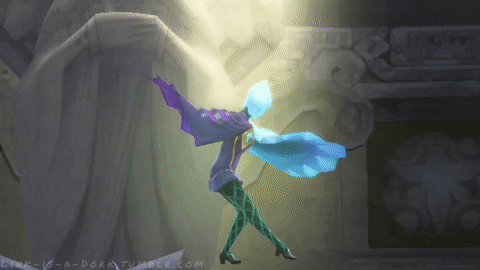
She is, quite unlike Ghirahim's aspect of individual advancement, wholly geared toward a model of mutual enhancement with a partner. She is built with a singular and clear objective in mind, perfectly designed to suit the needs of the one wielding her as a supplement to their ability, rather than an autonomous servant. She defers entirely to her Master's decisions at all times, though does make informed suggestions, and does not appear to be able to relocate the physical sword on her own. Many of her abilities are things that must be directly requested of her.
Even when she is given to performance, such as her singing or her ballet, these are seemingly dispassionate affairs that are precisely executed, preprogramed displays for Link's benefit. Absolutely nothing, not even particular inflections of emotionality, must risk the distortion of her relayed messages and guidance to Link-- these displays may also be something analogous to morale boosting rewards or a really weird form of reverence to the musically inclined Hylia. Either way, Fi is highly logical and presents herself foremost as an instrument and a tool.
She does not indulge in a persona or otherwise engage in anything not directly tied to her assigned mission-- she does not get distracted or indulge personal whims as Ghirahim does. But critically, a large part of her design is geared towards an awareness of her surroundings. Fi has a visible consciousness for the living things around her at all times, contrasting to Ghirahim's seeming negligence of them and open disdain.
Fi's orderly efficiency and lack of cultivated personality to detract from her purpose make the fact of her construction obvious. Unlike Ghirahim, her true nature and her task is almost painfully undisguised. She exists in a simple sincerity, almost austere, seemingly unwilling or unable to seek function beyond her designation without being updated by another. However, her concentrated application seems to achieve concentrated results, strengthening both herself and her wielder in a near impenetrable mutual reinforcement.
It is perhaps of no coincidence that, despite Fi's seeming inflexibility and clinical pragmatism, she also expresses something of a fondness for Link at the end-- in many ways, mirroring her Divine creator. She does this very robotically, by correlating her collected data time spent together and their completed task with what she's observed of human happiness.
Skyward Sword seems to argue that Ghirahim's main flaw is spreading himself too thin, or trying to be so many other things, that he falls short as a sword in the end. It suggests that his sin, like others in the franchise, is getting too big for his boots scabbard and letting his pride become his downfall. His individualism gets presented with a great cost, as he has only enhanced himself in ways that seemingly do not apply when he returns to his primary function as a sword. The emotionality he has, such as the frustration and cockiness and bloodlust he indulges, are also shown to lower his successes-- reducing the sense of his efficiency and precision beside the ever level, measured Fi.
When he returns to Demise's hand, Ghirahim is already weakened and spent. Despite all he's done for his Master's revival, Demise is left to fight with a paling version of the blade that once fatally wounded Hylia-- not unlike a Master Sword in need of restoration to its full power.
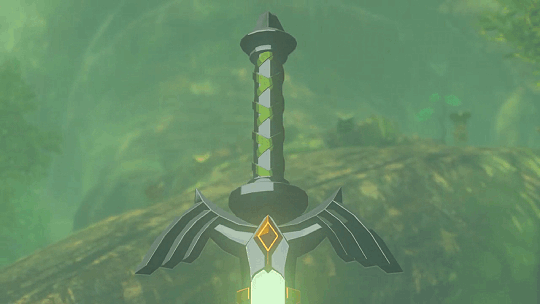
There's a legend regarding Gorō Nyūdō Masamune, widely regarded as the greatest swordsmith in Japanese history, and Sengo Muramasa, who is famously known for creating unique and terrifically sharp blades that are considered cursed.
It starts when Muramasa challenges Masamune to see who can make a finer sword. When the work is done, they go down to a river, and place the blades in the water with the cutting edge towards the current.
Muramasa's sword, which he named Ten Thousand Winter Nights, cuts everything that floats its way-- leaves, fish, even the wind that happened across it. It is so sharp that nothing escapes unscathed.
Masamune's sword, named Tender Hands, is placed in the river and cuts the leaves that go by so seamlessly, they reform on the other side. Fish swim up to it and seem to be repelled by its aura, avoiding death. The wind kisses the blade gently with a pleasant whistle.
Muramasa isn't impressed by this. He thinks the blade is useless, barely cutting anything at all, and starts to remark on the lack of skill. Masamune smiles at the criticism, but merely compliments that Muramasa's sword is indeed quite sharp.
A monk who had watched all this from nearby approaches at that point, bows, and interjects with his own observations.
Though he too observes that Muramasa's sword is technically very finely made, he notes that it's a bloodthirsty, wicked blade. It cuts anything in its path indiscriminately, he says, and would just as soon cut a butterfly in half as remove somebody's head.
Masamune's sword, however, was the clear winner in the monk's opinion-- a gentle blade that did not needlessly cut that which was innocent or undeserving, tempered by grace. It is a benevolent sword, and so far finer made.
In popular culture, Muramasa's blades have held onto their violent reputation. There's a superstition that they can compel their wielder to murder. It has even been said that, once drawn, they can't be sheathed again until their thirst for blood is sated-- even if it has to drink from its own wielder.
They also had a weirdly consistent habit of maiming or killing members of the Tokugawa Shogunate, and so became an anti-Tokugawa symbol synonymous with the rebellion. So that's fun.
But Masamune was considered to be a very calm man, who was controlled and reserved and quite spiritual. Muramasa, though, was depicted as an aggressive man, who was a bit wild and kinda unpredictable. As far as the folk stories go, Muramasa is depicted as having been quite envious of Masamune. Unlike Masamune, who approached his craft as the art of achieving clean death, they say Muramasa needed to transfer his unhinged energy into his blades to keep from being overwhelmed by it himself.
Because their natures bled into the swords they created, it was believed that Masamune and Muramasa imbued them with purifying and demonic power, respectively.
Just as with Demise and Hylia and the swords that they created-- as inspired by such a legend-- the spirits inside of them represent their natures, as well.

#legend of zelda#zelda meta#zelda analysis#long post#hylia#demise#fi#ghirahim#skyward sword#sksw#zelda lore#tloz
91 notes
·
View notes
Note
If the portals in Minish Cap make Hylians Minish-sized, then if a fairy uses a portal, does that make them even smaller? Like, if a Minish is 10% the size of a Hylian, then does that mean a fairy will go through the portal and come out 10% the size of a normal fairy?
This is assuming that fairies can even use portals, but if this is set in Linked Universe... If Hyrule goes through and then uses his fairy spell after the portal, will he shrink even smaller or stay the same size?
I know this is hypothetical and likely doesn't have a canon answer, but I need your thoughts on this.
First off: important to note that it's not the portal ITSELF that does the shrinking, it's Ezlo (Four's Minish Cap companion) casting a spell while near/above a portal. So for Four to use portals in Linked Universe, either you say that Ezlo taught him the spell, or you say he's using a separate item from Four Swords called the Gnat Hat, which does something similar (or you just do whatever you want of course, but I'm trying to answer re game canon). So in terms of Hyrule going through a Minish portal, the key thing to ask is whether magic is involved.
Assuming it is, there's actually a canonical answer to the first half of your question at least: when Four goes through a portal in game, all of his items shrink with him, and that includes any fairies he's holding. It also obviously includes Ezlo. So as long as fairy Hyrule was "in range" of the spell, I think he'd shrink. If he was out of range, i.e. not affected by the spell, then he'd stay his normal size - because the portal doesn't do anything by itself.
If he went through the portal as a Hylian and THEN transformed, I also think he'd shrink, because tiny Four still operates the same as big Four in terms of abilities and items, so Hyrule would surely be similar. It doesn't make sense for his spell to operate differently.
UNLESS.
See, aside from Ezlo (who is already transformed by the start of the game) the Zelda games don't really cover how transformation magic interacts with Minish magic, because it never comes up. If you felt like playing around with that a bit, you could say that the Minish shrinking spell or portal influences Hyrule's magic in some way, like making him accidentally transform into a fairy while trying to go through as a Hylian. That isn't canon, but also isn't beyond all imagination. And it might be fun.
Canon-ish answer however is that Hyrule going through a portal operates exactly the same as Four going through a portal: tiny fairy on entry equals tiniER fairy on exit.
Hope that helps!
#linked universe#lu four#lu hyrule#legend of zelda#minish cap#zelda lore#asks#reminder that I love answering these sort of questions so definitely do ask!!
26 notes
·
View notes
Text
Implications of the Mother Goddess Statue quest
The statues at the sacred springs all speak as if they are separate beings and not a single consciousness who can see everything. The quest logs all say the Goddess Statues ask you to help them, not the Goddess herself. They also have to gain energy from each other and presumably prayer in order to function. This pretty much confirms that the goddess statues aren't Hylia speaking from the heavens but contain either her Bunrei(pieces of a soul) or spirits that have manifested and taken over her role. This would line up with Hylia sacrificing her divinity to reincarnate as Zelda to protect the world from Demise and his incarnations.
139 notes
·
View notes
Text
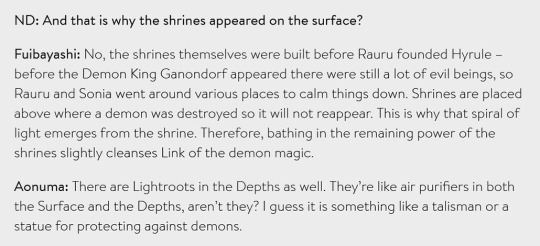

Source
#Legend of Zelda#Tears of the Kingdom#Shrines of Light#Rauru#Sonia#Zelda lore#Nintendo Dream#Zelda Dungeon
48 notes
·
View notes
Note
what is the story of zelda?
Oof, that's kind of a tough one. It's definitely more complicated than Sonic, lol.
The most basic and short way I can explain is: three people reincarnate for all eternity due to a curse. Link is the reincarnated chosen hero, Zelda is the mortal reincarnation of the goddess Hylia, and Ganondorf is the reincarnation of the demon king Demise.
But if you want the long version: The Zelda franchise has an official timeline which ends up splitting in 3 branches.
It all starts with Skyward Sword. The world is created by the three goddesses: Din goddess of power, Nayru goddess of wisdom & Farore goddess of courage. Before leaving for the heavens, they created the Triforce (a powerful artifact containing the power of the gods).
Later, there's a war between Demise & Hylia, due to the demon king wanting to steal the triforce for his own. To ensure that the triforce (a powerful artifact containing the power of the gods) wouldn't get in the wrong hands, she lifted some of the earth to the heavens alongside the triforce, where her people live in harmony. Hylia would then abandon her immortal form and reincarnate into Zelda. Later, when Link would defeat Demise, before he dies, he curses them in an eternal reincarnation cycle of bloodshed with no end. People settle to the surface, the kingdom of Hyrule is built.
If you want the full story of the rest of the games, I suggest this 15 mins video by Zeltik. because I don't want to write 10 paragraphs explaining the full thing, lol.
#ask answered#tloz#the legend of zelda#legend of zelda#loz#nintendo#zelda#zelda timeline#zelda lore#zelda loz#link loz#ganondorf
22 notes
·
View notes
Text
I’m bored, and now all my hyper-fixations must unite for me to get sucked back into them. So now I want to see who thinks which has the best lore :3
I’m biased for one in particular but you’ll never know mwahahahahahaha!
#tumblr polls#polls#my polls#pokemon#nintendo#kirby#kirby lore#the legend of zelda#zelda#zelda lore#splatoon#splatoon lore#pokémon#pokemon lore
18 notes
·
View notes
Text


Fun fact! In all three timelines Ganondorf dies standing up. This is a cool homage they’re all the same Ganondorf in different timelines worthy of the Triforce of Power.
#TOTK#zelda lore#legend of zegend#loz oot#loz ww#wind waker#loz wind waker#loz tp#loz twilight princess#twilight princess#ganondorf#easter egg#tears of the kingdom
84 notes
·
View notes
Note
What would have lead to Hyrule being MORE then 10,000 years old in your timeline? Most states and cultures IRL don’t even last above several centuries at most, so I wonder what’s the reason for it’s epithet as the “Eternal Kingdom” as mentioned in one of your posts
So... the name "Eternal Kingdom" is mainly what other countries outside of the Hyrule's border called them. Since from their perspective, the Kingdom of Hyrule had a very long and unbroken rule over its lands for 10 000 years under the same name and same ruling royal family. With evidences that they do have some level of divinity to back them up.
As opposed to themselves who may have gone through cycles of change. For example, my version of Ordon - their own recorded history goes back at least 9000 years with multiple eras of different rulers, governance, disasters and significant events that shape them into their present-day state. These countries and their people don't essentially need to know Hyrule's origins and take it into account with how they view this ancient Kingdom. But as far as they are aware, Hyrule has always been there. Until the day of the Second Calamity and how that shattered Hyrule's 10K year long streak.
.
As for how old Hyrule actually is, I put an asterisk on the " 10 000 years* " since it's a bit vague and they didn't really give definite dates on when exactly certain events occurred and how far apart they happened from each other.
My interpretation of the BotW-TotK timeline is that the Founding of the Kingdom of Hyrule, the Imprisoning Wars and later the First Calamity happened WITHIN the Ancient Era of 10K. And the Age of Zonai along with precedessors of the Ancient Hyruleans existed for some time before the Kingdom's founding. (The exact number of years / dates lost or forgotten from historical records ).
At least from the standpoint of BotW/TotK's present-day. Since it happened so far back in time that its all mashed together into a blur.
Its implied that very little of recorded history from back then survived to present-day. Either because of written text being lost or destroyed, language drift (similar to how Ancient Egyptian hieroglyphs were misinterpreted/untranslatable for the longest time until the Rosetta Stone discovery in 1799) or they were forgotten from living memory. Or even a combination of all above.
TL;DR - the Kingdom of Hyrule is estimated to be 10 000-ish years old in the BotW-TotK timeline, based on in-game lore and history. And because of their extreme longevity, the Kingdom is sometimes called the "Eternal Kingdom" by their neighbours.
--
Lastly, this is a rule I give to myself when it comes to worldbuilding, whether it be with the Legend of Zelda or...any fictional world I play around with.
The fictional world and their lore does not essentially have to be realistic, to our real world standards. It only needs to be believable within the rules of their fantastical universe.
(Quoted by me cuz I made that up, 05 Sept 2023)
What I mean by this is that, it is okay to take inspiration from real world history, culture and people when building up your stories and the world that it is set in. How realistic you want your worlds and stories to be is completely up to you. BUT it is not essential. You can be as fantastical and mind-blowing as you want in your world and stories. As long as it is believable to the reader / player.
Hyrule being 10 000(ish) years old is frankly mind-bending and almost eldritch to think about. And that's okay. You can accept that official canon or not. And let's be honest, Nintendo is not that well-known for their lore building in their games. And the canon Zelda timeline is already a mess to follow with.
(Also do check out Overly Sarcastic Productuon's video about BotW-Hyrule and its environmental storytelling (pre-TotK release). It has influenced how I interpret this specific version of Hyrule).
Personally, realism for me is more of a source of inspiration rather than a hard rule to how my worlds work. I build my worlds to be...places that I want to explore. With that feeling of exploration to immerse people into what this world is like and their in-universe lore adds layers that can excite the imagination.
And that's the beauty of worldbuilding. You can make the most fantastical world with magic, dragons and aliens, or the most realistic world based on real life but with mechas, dinosaurs and cowboys. Because why not!
The only limitation is your own imagination and how you build it up.
TL;DR - You can worldbuild the most realistic or fantastical world as much as you want. As long as it is believable to the reader that they too can imagine your world in their own imaginations.
#answered#worldbuilding#zelda worldbuilding#zelda lore#project ordon#botw project ordon#botw totk project ordon#botw totk beyond hyrule#botw beyond hyrule#legend of zelda#breath of the wild#botw#tears of the kingdom#totk
40 notes
·
View notes
Text
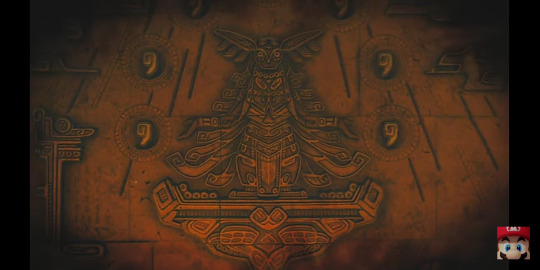


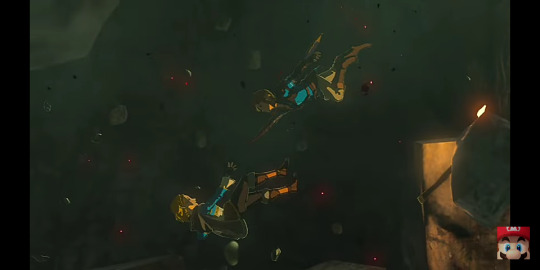

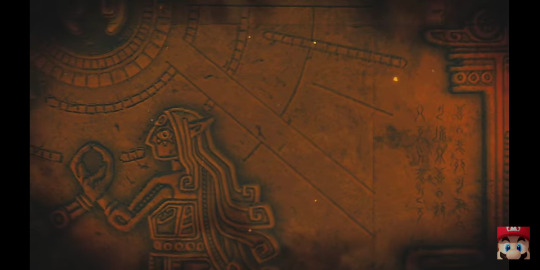

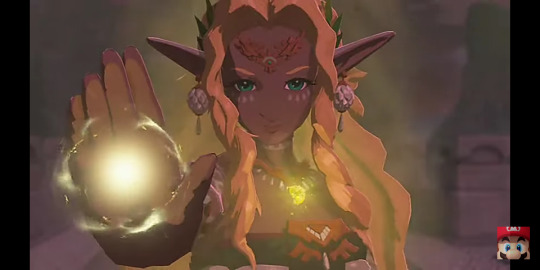


#totk#tloz totk#tears of the kingdom#the legend of zelda#zelda#tloz theory#tloz lore#zelda lore#botw#tloz botw#zonai#hylia#ganon
264 notes
·
View notes
Text
▣▣▣▣▣▣▣▣▣▣▣▣
ɪ ᴛʜɪɴᴋ ᴛʜᴇ ʀᴇᴀꜱᴏɴ ᴡʜʏ ʏᴜɴᴏʙᴏ ɴᴏ ʟᴏɴɢᴇʀ ᴜꜱᴇᴅ ᴅᴀʀᴜᴋ'ꜱ ᴘʀᴏᴛᴇᴄᴛɪᴏɴ ᴀᴛ ᴛʜᴀᴛ ᴛɪᴍᴇ ɪꜱ ᴀɴ ᴀʟʟᴇɢᴏʀʏ ꜰᴏʀ ʜɪꜱ ᴘᴇʀꜱᴏɴᴀʟ ɢʀᴏᴡᴛʜ.

ᴀꜰᴛᴇʀ ᴀʟʟ, ᴛʜʀᴏᴜɢʜᴏᴜᴛ ʙᴏᴛᴡ, ʏᴜɴᴏʙᴏ ᴡᴀꜱ ᴀꜰʀᴀɪᴅ ᴏꜰ ᴀʟᴍᴏꜱᴛ ᴇᴠᴇʀʏᴛʜɪɴɢ ᴛʜᴀᴛ ꜱᴜʀʀᴏᴜɴᴅᴇᴅ ʜɪᴍ. ᴀɴᴅ ʟᴇᴛ ʜɪᴍ ꜱᴛɪʟʟ ʙᴇ ᴀ ʟɪᴛᴛʟᴇ ꜱʜʏ ᴀᴛ ᴛʜᴀᴛ ᴛɪᴍᴇ, ʙᴜᴛ ʜɪꜱ ᴘᴇʀꜱᴏɴᴀʟ ɢʀᴏᴡᴛʜ ɪꜱ ᴠᴇʀʏ ɴᴏᴛɪᴄᴇᴀʙʟᴇ. ʜᴇ ɪꜱ ᴛʜᴇ ꜰɪʀꜱᴛ ᴛᴏ ɢᴏ ᴛᴏ ᴛʜᴇ ᴛᴇᴍᴘʟᴇ ᴏꜰ ꜰɪʀᴇ, ᴏꜰꜰᴇʀꜱ ʜɪꜱ ɪᴅᴇᴀꜱ ꜰᴏʀ ꜱᴏʟᴠɪɴɢ ᴘʀᴏʙʟᴇᴍꜱ, ᴇᴛᴄ.
»»———- ———-««

𝗔𝗻𝗱 𝗶𝗻 𝘁𝗵𝗲 𝗲𝗻𝗱, 𝗬𝘂𝗻𝗼𝗯𝗼'𝘀 𝗱𝗲𝗳𝗲𝗻𝘀𝗲 𝘁𝘂𝗿𝗻𝘀 𝗶𝗻𝘁𝗼 𝗮𝗻 𝗮𝘁𝘁𝗮𝗰𝗸.
▣▣▣▣▣▣▣▣▣▣▣▣
#totk#zelda theory#zelda lore#the legend of zelda#link#zelda#botw daruk#yunobo#botw#tears of the kingdom#breath of the wild
71 notes
·
View notes
Text
Zelda Theory: Fi the Fairy Queen
Okay, so this post by @twilight-linkess inspired me to move forward with a theory I had. This got way too long. Ye who travel onward beware. Here there be theories.
The gist of my theory is that Fi is a fully matured Fairy Queen and that Fairy Queen is a specific species of fairy. I also think Fi and all fairies (Fairy Queens, Great Fairies, Fairies, etc.) are raised to help heroes with their magic. With Fi, I think she excelled as a fairy which ended with her earning the title of “Sword Spirit.” And maybe was specially chosen for her particular set of skills to be the Fairy that would inhabit the Master Sword for thousands of years.
If this is of interest to you, I have some more to say...A lot more to say.
So first things first.
Here is a Fairy Queen from The Wind Waker:

And here is an image of Fi from Skyward Sword:
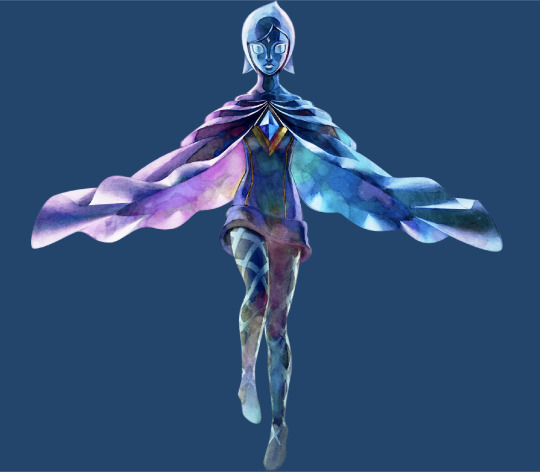
These two look so so so so similar. Everything from base color palette to hair and nearly unreadable facial expression, with solid color eyes. The biggest difference being that the Fairy Queen from Wind Waker looks like a child but is apparently “much older,” according to the ZeldaWiki.
But if Fairy Queens were a specific subspecies of fairies, they could potentially have a lifespan of tens of thousands of years, meaning even if she is “old” by Hylian standards or Zora standards, or what have you, she could theoretically still be a child by Fairy standards.
The Fairy Queen and Fi also have similar powers.
The Fairy Queen in Wind Waker has weapon based abilities. I have yet to play WW, but according to the wiki, her specific ability is she imbues arrows with ice or fire powers.
Maybe each type of fairy has their special magic category. Fairy Queens are weapon/item related. Great Fairies are health or armor related, depending on the refinement of their ability. Regular Fairies are healing powers only. Etc.
And going off that, maybe at a young age, Fairy Queens would still have elemental or weapon-based magic, but would only be able to supply a smaller bit of magic to weapons and items such as adding elemental attacks.
Then as Fairy Queens age, they refine their subset of powers and undergo some form of coming of age ceremony where they are finally able to adopt a weapon form or are able to more powerfully perform elemental attacks. Like I dunno, harnessing the wind perhaps? Which takes us to the Gale Boomerang.
First, take a look at some details on the Gale Boomerang:

And some details on the Master Sword:

And some details on Fi’s body:
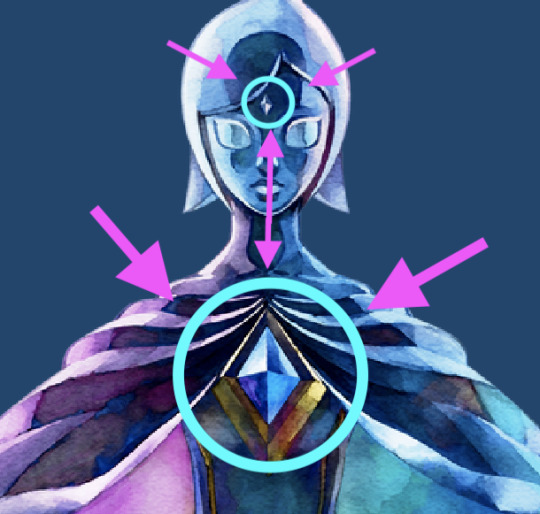
These inlaid gems are notably missing from the child-like Fairy Queen from Wind Waker, supporting the theory that she has yet to undergo her coming of age to become an item or weapon meant to aid the hero.
Fi on the other hand would have already undergone her coming of age, and based on her very terrible social skills and obsession with percentages, she was probably a prodigy even among Fairy Queens, resulting in her being specially chosen by Hylia to be a Sword Spirit. Tasked with assisting Hylia in creating one of the most powerful type of weapons heroes will use: A blade that seals darkness.
In Fi’s case, she was to become the Goddess Sword/Master Sword. But maybe the Four Sword, Lokomo Sword, Phantom Hourglass Sword, Great Fairy Sword, and Fierce Diety Sword are also Sword Spirit weapons crafted by a god and a Fairy Queen.
Anywho, that was a bit of a tangent, so what about the Fairy of Winds? What do they have to do with this again?
Well, Fi is a spirit that inhabits the Master Sword, which can talk to Link (and Zelda).
And the Gale Boomerang is another weapon with a spirit that can also talk to Link (and probably Zelda).
If both of these items are weapons with spirits bound to help the hero and they can both talk to the hero who wields them, (given that they still have enough strength and energy to do so), isn’t it possible that the Fairy of Winds and Fi are the same type of being? In this case, Fairy Queens?
If so, the Fairy of Winds may have at one point been able to manifest a physical body like Fi’s does in Skyward Sword after they inhabited the Gale Boomerang. Which I think is a pretty neat idea.
And I like to think that if the Fairy of Winds were able to manifest, she would have similar diamonds on her chest and head, she would probably be dressed slightly different, and she would probably have different base colors.
And—
Wait...
There is another weapon that can do all these things as well now that I think about it.
I’ll be right back.

Okay.
Look ye upon Ghirahim:

Did you notice he also has those diamonds? And the hair? And the eyes? And he can turn into a weapon? And he can talk to the hero as well as the person who wields him?
Because he can!
Which means...
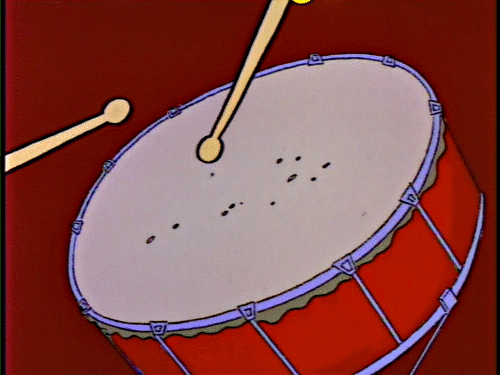
That’s right!
Ghirahim would ALSO have to be a Fairy Queen. Or a Fairy King, perhaps?
Ahhh!
((Okay, future Ani here. This all starts to devolve into pure insanity and headcanon from here on so like, if you’re anybody is still around and still reading, feel free to stop reading now. Or carry on. Thanks for reading this far. 😅 ))
Okay hear me out. But like, what if Fairy Queens/Kings are all inherently good from the beginning? Because their purpose is to help heroes. That would mean there is a chance that Ghirahim was at one point good. Possibly really good at performing Fairy Queen/King magic even. Maybe even a contender for being chosen as the spirit for the Master Sword. Maybe he resented the fact that Fi was chosen over him and Demise saw the opportunity to act, corrupting Ghirahim forever.
Or maybe Ghirahim was the first Sword Spirit, but was eventually forgotten after Fi came into being centuries later. The new and improved Ghirahim. And then Ghirahim and Demise both fell to the darkness of envy, corrupting both of them forever as Fi and Hylia took center stage among the gods.
Man, I have many new headcanons about an entire race of Fairy Queens and Kings that I need to make more notes about now.
All I can think is that they train for millennia to hone their skills as children, then as they get older they must undergo their own trials, just as Link must in the various games. This is turning into an anime in my head now...I have a problem.
But seriously!
Maybe the better they perform in their trials, the more glorious the weapon they turn into.
So for the Fairy of Winds, they weren’t the top of their class like Fi or Ghirahim who earned the Sword Spirit title, rather they earned the opportunity to be a magic item that would forever be passed down among heroes to aid them in their quest. Maybe they couldn’t be a Sword Spirit because their elemental magic was too good to be anything but an item tied to their area of expertise.
And like, what if as the years go by, the magic drains the fairy of their vitality?
Everything gets more difficult with age.
Even for fairies.
That’s why the Gale Boomerang speaks only once to Link in TP. She is old and tired, but still willing to help, even if this is the last of her magic.
The same problem can be seen with Fi in BOTW. It’s why Fi can no longer manifest a physical body and can rarely speak anymore. 10,000 years was a long time, even my Fairy Queen standards. She finds herself resting more frequently and for longer intervals, but she has a duty. What if she feels like Link falling was her fault in her old age? (I’ve seen fics on this and they have been great, btw.)
Maybe in the next game, Link will have to put Fi to rest and transfer a new Fairy soul into the Master Sword. Or maybe another sword will need to be forged with a new Sword Spirit.
Ya know....just some thoughts I’ve had. Definitely revamped after that comic.
I’m hyped.
Thanks for reading!
#legend of zelda#wind waker#twilight princess#skyward sword#breath of the wild#zelda theory#headcanon#literally just a bunch of rambling#fi is a fairy queen#fairy queen WILL become a weapons#GHIRAHIM is a fairy queen#fi#ghirahim#zelda lore#fairy queen#fairy lore#fairy of winds#gale boomerang#zelda sword lore ideas#i've created a monster#the monster is me
82 notes
·
View notes